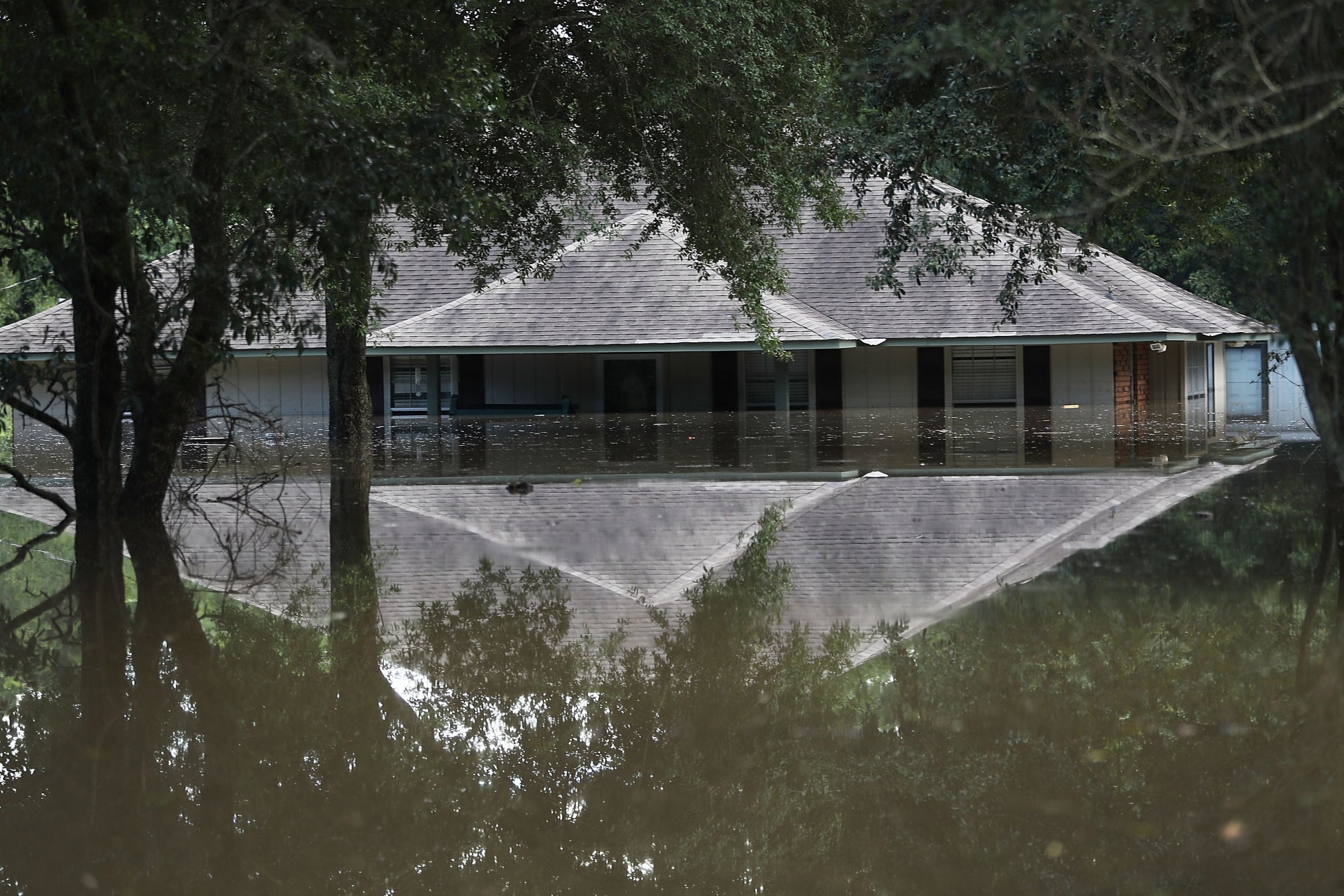
Flooding disasters have occurred with increasing frequency in recent years, destroying homes and taking lives. In 2014, floods in the U.S. caused nearly $3 billion in damage and took 38 lives. But when it comes to property damage, the federal government is often left with the bulk of the bill.
The National Flood Insurance Program (NFIP)—the federal program charged with supporting communities vulnerable to floods—mandates insurance for any vulnerable homeowner, no matter how poorly located or built their home is. And those costs have added up—the NFIP currently owes $24 billion to the U.S. Treasury.
Now a bipartisan pair of congressional representatives have introduced legislation, shared exclusively with TIME, that is aimed at restoring the program’s solvency—or at least bringing it closer. The legislation, called the Repeatedly Flooded Communities Preparation Act, would require local communities to identify properties likely to experience frequent flooding and implement plans to reduce that risk. Those plans could take the form of anything from voluntary buyouts—paying people to leave their flood-vulnerable properties—to reviewing development plans to ensure that new homes and buildings aren’t built in a flood danger zone.
Read More: Why ‘Once-In-A-Lifetime’ Flooding Keeps Happening
Properties that experience repeated losses—flooding at least twice in a ten-year period—have cost the federal government more than $12 billion since 1978, according to a Pew Charitable Trusts report. But the bulk of those losses are due to a relatively small number of repeatedly victimized properties, experts say. One home in Mississippi valued at $69,000 flooded 34 times in 32 years, according to a National Association of Insurance Commissioners study. The federal government paid more than $660,000 to fix it. In Alabama, the federal government has paid more than $2.3 million fixing one $153,000 home.
“It’s a cycle that’s very costly and dangerous: flooding and rebuilding, flooding and rebuilding,” says Phyllis Cuttino, who directs a program on flooding at Pew. “There are a million outrageous examples.”
Flooding is nothing new—just ask Noah or Gilgamesh—but scientists say the problem has worsened in recent years, at least in part due to man-made climate change. Warmer air holds more water vapor that eventually forms clouds and comes down to the ground as rain. Over the past 17 months, eight extreme storm events considered very low probability—meaning they had less than a 0.2% chance of occurring—have hit the U.S., according to National Oceanic and Atmospheric Administration (NOAA) data.
“Water comes down faster and there’s more volume,” says Astrid Caldas, a climate scientist at the Union of Concerned Scientists. “And it’s not just the amount of water vapor in the atmosphere—studies show the intensity is greater.”
Read More: Why New York City Will Be Flooded More Often
Gradual sea level rise due to man-made climate change also plays a key role threatening coastal communities. Higher seas can cause bigger surges when a storm hits the coast, as happened during Sandy in 2012. But the scale of the potential damage in those communities can also be attributed to the growing number of Americans who choose to live by the sea. The number of Americans living in coastal counties increased by almost 40% to 123.3 million between 1970 and 2010, according to a NOAA report.
The new legislation does not mention climate change, an issue that still divides Republicans and Democrats—despite overwhelming scientific evidence proving the existence of man-made global warming. Instead, it focuses on addressing financial problems with the current flood insurance program and requiring local communities to prioritize climate adaptation.
“Repetitive flood loss continues to place communities and families at risk,” says Representative Earl Blumenauer, who sponsored the legislation. “This legislation focuses on engaging communities in simple, self-help solutions.” Blumenauer, an Oregon Democrat, sponsored the legislation with California Republican Congressman Ed Royce.
Policy experts hope that further changes to the flood insurance program when it faces reauthorization next year will force developers and homeowners to rebuild better and stronger, taking into account the latest science on sea level rise and flooding. Every dollar spent on preparation saves $4 in post-storm clean up costs, according to research.
The new proposal is not the first policy aimed at addressing frequent flooding. President Obama used his executive authority last year to require federally funded projects to be built at least 2 feet above the 100-year flood elevation or at the 500-year flood elevation. (A 100 and 500-year flood are floods that would be expected to occur once every 100 or 500 years).
The bill’s sponsors are hoping that the bi-partisan approach will help draw support to the legislation, but they are also likely to face bipartisan opposition. Many residents of threatened communities tend to oppose any measure that might slow the recovery process after a storm or reduce how much they might collect in the aftermath of a flooding incident. Still, no matter happens to the flood insurance program, there is only so much the federal government can do to push people and businesses to rebuild with flooding in mind.
Read More: The Hard Math of Flood Insurance in a Warming World
“One of the key challenges we face in this country is that building codes are adopted, implemented and enforced at a local level,” says Susan Rochford, who runs sustainability and energy efficiency programs at building infrastructure company Legrand. “And not all jurisdictions are operating under the same generation of code.”
More Must-Reads From TIME
- The 100 Most Influential People of 2024
- The Revolution of Yulia Navalnaya
- 6 Compliments That Land Every Time
- What's the Deal With the Bitcoin Halving?
- If You're Dating Right Now , You're Brave: Column
- The AI That Could Heal a Divided Internet
- Fallout Is a Brilliant Model for the Future of Video Game Adaptations
- Want Weekly Recs on What to Watch, Read, and More? Sign Up for Worth Your Time
Write to Justin Worland at justin.worland@time.com